
Summary and links to further reading about Connecticut's constitutions
- Subject:
- English Language Arts
- History
- Social Science
- Material Type:
- Module
- Student Guide
- Provider:
- Connecticut Explored
- Author:
- various
- Date Added:
- 07/29/2021

Summary and links to further reading about Connecticut's constitutions

Summary and links to further reading about Connecticut's role in the Civil War
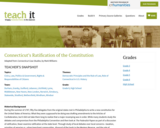
Uses primary sources to explore the impacts World War I had on the struggle for civil rights in Connecticut and America.
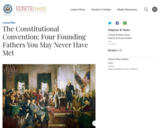
Witness the unfolding drama of the Constitutional Convention and the contributions of those whom we have come to know as the Founding Fathers. In this lesson, students will become familiar with four important, but relatively unknown, contributors to the U.S. Constitution Convention: Oliver Ellsworth, Alexander Hamilton, William Paterson, and Edmund Randolph.

To what shared principles did the Founding Fathers appeal as they struggled to reach a compromise in the Constitutional Convention? In this lesson, students will learn how the Founding Fathers debated then resolved their differences in the Constitution. Learn through their own words how the Founding Fathers created"a model of cooperative statesmanship and the art of compromise."
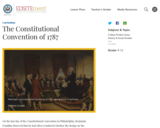
The delegates at the 1787 Convention faced a challenge as arduous as those who worked throughout the 1780s to initiate reforms to the American political system. In this unit, students will examine the roles that key American founders played in creating the Constitution, and the challenges they faced in the process.
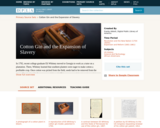
In 1792, recent college graduate Eli Whitney moved to Georgia to work as a tutor on a plantation. There, Whitney learned that southern planters were eager to make cotton a profitable crop. Once cotton was picked from the field, seeds had to be removed from the cotton fiber by hand before cotton could be sold. This process was labor-intensive and time-consuming, and it limited the amount of cotton that planters, relying on the work of enslaved people, could produce.

In this activity, students use a range of primary and secondary sources about San Francisco's Chinatown (1880s-1920) to explore what the community meant to residents and to outsiders.
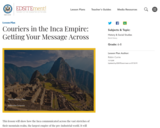
Focusing on the means used by the Incas to send messages over long distances, the lesson introduces students to the Inca Empire, which extended from northern Ecuador to central Chile and from the Andes to the west coast of South America between 1200 and 1535 CE.
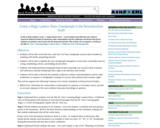
In this activity students create a "magic lantern show," or presentation that illustrates how African American defined freedom for themselves after emancipation and the challenges and threats they faced. Students use primary sources from the Reconstruction period. This activity can accompany a viewing of the filmDr. Toer's Amazing Magic Lantern Show: A Different View of Emancipation.

In this activity students examine documents from the period of the First Great Migration of African Americans to the North. As they look at the documents, they take notes to build a character of a migrant. Then they create a scrapbook that shows their characters' personal journeys and experiences during the Great Migration. This activity can be part of a unit that includes the film Up South: African-American Migration in the Era of the Great War. Students will need art supplies such as construction paper, tape or glue, scissors, and markers to make the scrapbooks.
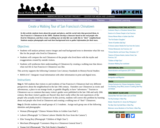
In this activity students learn about the people and places, and the social rules that governed them, in San Francisco's Chinatown in the 1800s. Students develop a character based on the real people who lived in Chinatown, and then create a walking tour of what life was really like in "their" neighborhood. Students analyze photographs and read short background texts to gather information for their tours.
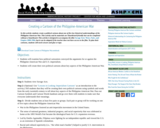
In this activity students create a political cartoon about one of five key historical understandings of the Philippine-American War. This activity and its materials are Smartboard-friendly but can be completed without a Smartboard. This activity is designed to accompany the film Savage Acts: Wars, Fairs, and Empire 1898-1904, but it can be adapted if the teacher does not have access to the film. To plan their cartoons, students will need scissors and glue or tape.
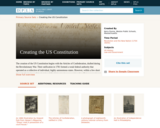
This collection uses primary sources to explore the creation of the US Constitution. Digital Public Library of America Primary Source Sets are designed to help students develop their critical thinking skills and draw diverse material from libraries, archives, and museums across the United States. Each set includes an overview, ten to fifteen primary sources, links to related resources, and a teaching guide. These sets were created and reviewed by the teachers on the DPLA's Education Advisory Committee.

This curriculum unit of three lessons covers the critical problems for United States foreign policy posed by the outbreak of the wars of the French Revolution. Was the U.S. alliance with France still in effect? Did America's young economy require the maintenance of close ties with Britain? Ultimately, President Washington decided on a position of neutrality. This official position would last until the outbreak of war in 1812. Neutrality proved to be difficult to maintain, however, particularly in light of the fact that both Britain and France consistently interfered with American affairs.
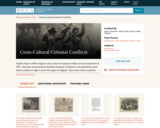
This collection uses primary sources to explore cross-cultural conflicts during the Colonial period of US History. Digital Public Library of America Primary Source Sets are designed to help students develop their critical thinking skills and draw diverse material from libraries, archives, and museums across the United States. Each set includes an overview, ten to fifteen primary sources, links to related resources, and a teaching guide. These sets were created and reviewed by the teachers on the DPLA's Education Advisory Committee.

Uses primary
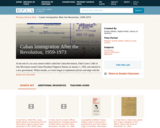
At the end of a six-year armed conflict called the Cuban Revolution, Fidel Castro’s 26th of July Movement ousted Cuban President Fulgencio Batista on January 1, 1959, and ushered in a new government. Within months, as Castro began to implement policies and align with the communist Soviet Union, hundreds of thousands fled Cuba for the United States. Most were educated members of the upper and middle classes. Many of these immigrants, termed “exiles” and “refugees,” believed their stay in the United States was temporary because Castro’s government would be short-lived. As Castro’s regime persisted, they realized their flight could be permanent. Pushed out by the consequences of the Revolution, the influx of refugees swelled the Cuban population of the United States from 79,000 in 1960 to 439,000 by 1970. Cubans settled across the country, with the most significant community in Miami, Florida, followed by Union City, New Jersey.

Most historians agree that the world has never come closer to nuclear war than it did during a thirteen-day period in October 1962, after the revelation that the Soviet Union had stationed several medium-range ballistic missiles in Cuba. This lesson will examine how this crisis developed, how the Kennedy administration chose to respond, and how the situation was ultimately resolved.

This art history video dicussion examines Willem de Kooning's "Woman I", oil on canvas, 1950-52 (MoMA).